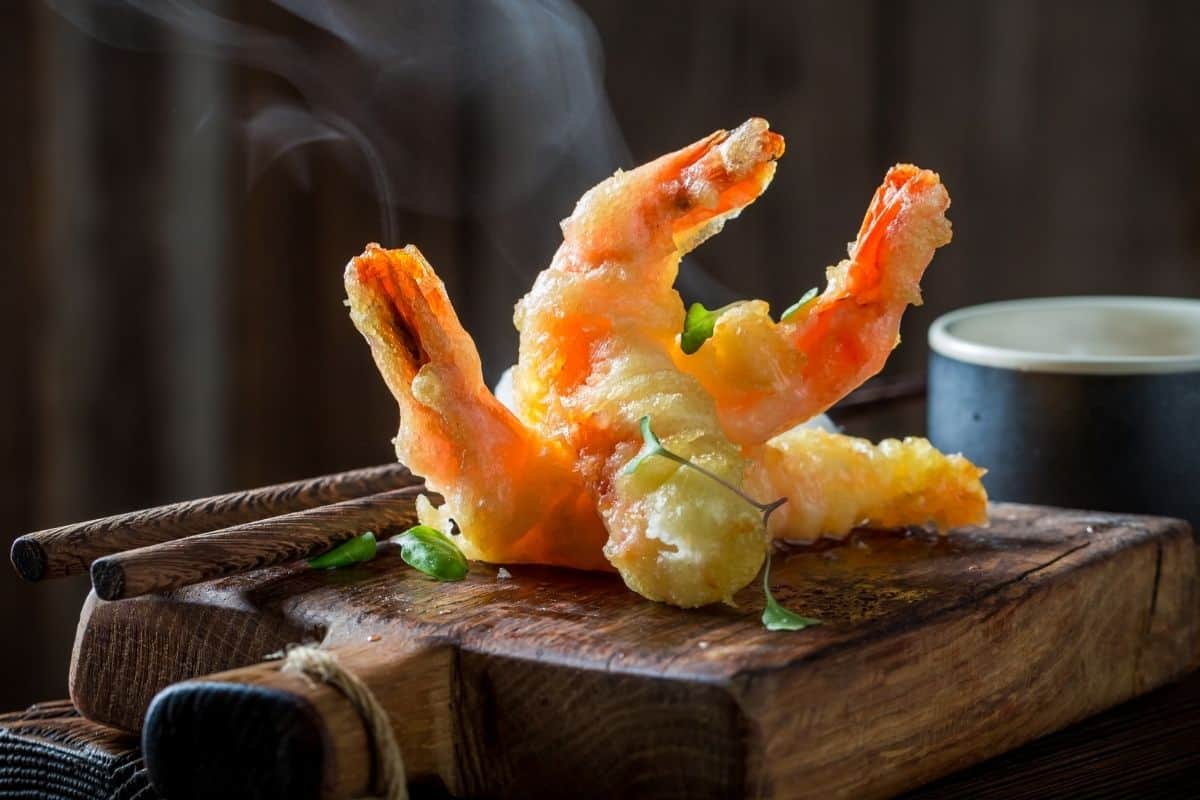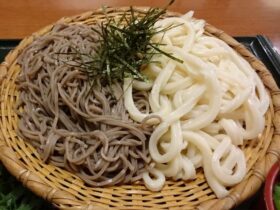Japanese cuisine has so much to offer to those who seek to have a diverse culinary and memorable cultural experience. One of the well-known and praised signature dishes that make this experience richer and fully enjoyable is none other than tempura (天ぷら).
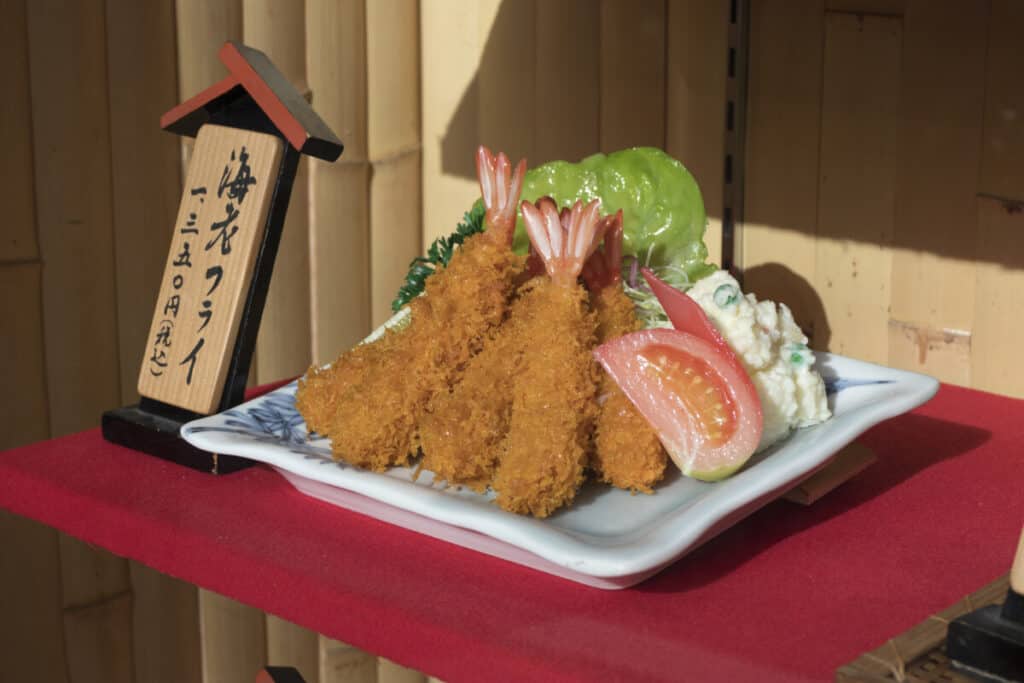
The difference between Japanese fried foods and those in the west is subtle but significant.
With tempura, the batter distinguishes it from other fried foods. It doesn’t require bread crumbs and uses less oil than other frying techniques. The batter is made up of three ingredients: whisked egg, white flour, and ice water. Occasionally, starch, vegetable oil, and various seasonings are added.
Japan was closed to outside trade for centuries, tempura is evidence of foreign influence. On their way to Macau, the Portuguese ended up in Japan in the 16th century for a brief period. One of their lasting effects on Japan was the introduction was a method of cooking similar to tempura.
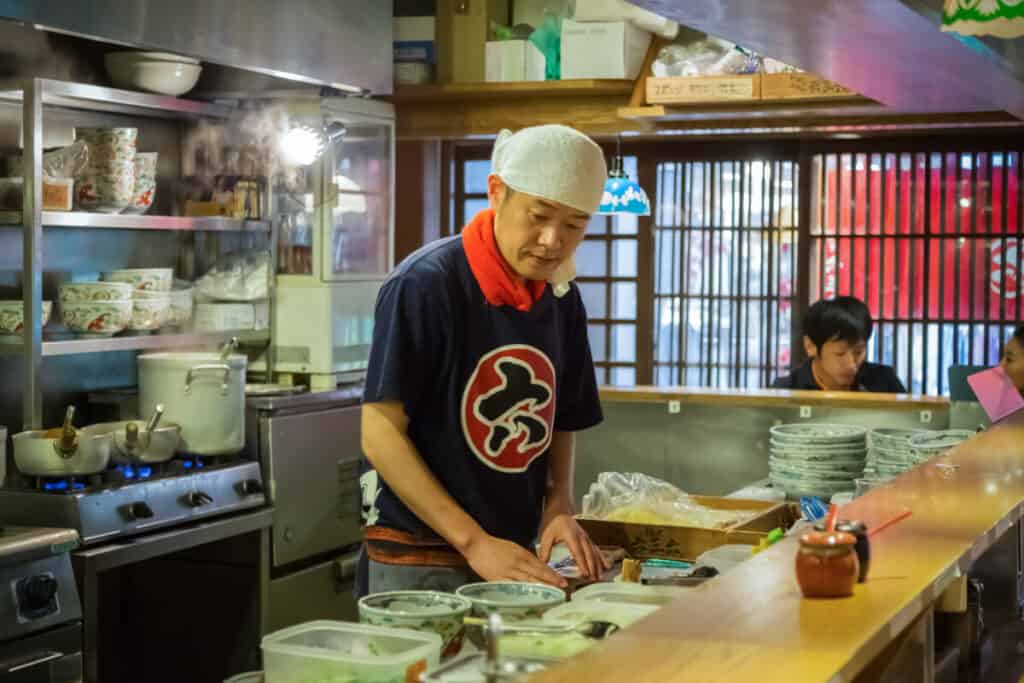
This cooking technique has been present in Japan ever since. The word derives from the Latin word ’tempora’ and it’s associated with the tradition of Ember days in Catholicism. In Portuguese, the verb ’temperar’ also means seasoning or flavoring. The reason this food became popular is that despite being deep-fried, it’s not heavy or too oily.
As the tradition of Ember days requires believers not to consume animal meats, the dishes were made from a selection of vegetables and seafood. Here are a few examples of what the Japanese use for tempura.
Types of tempura
Ebi: prawn/shrimp
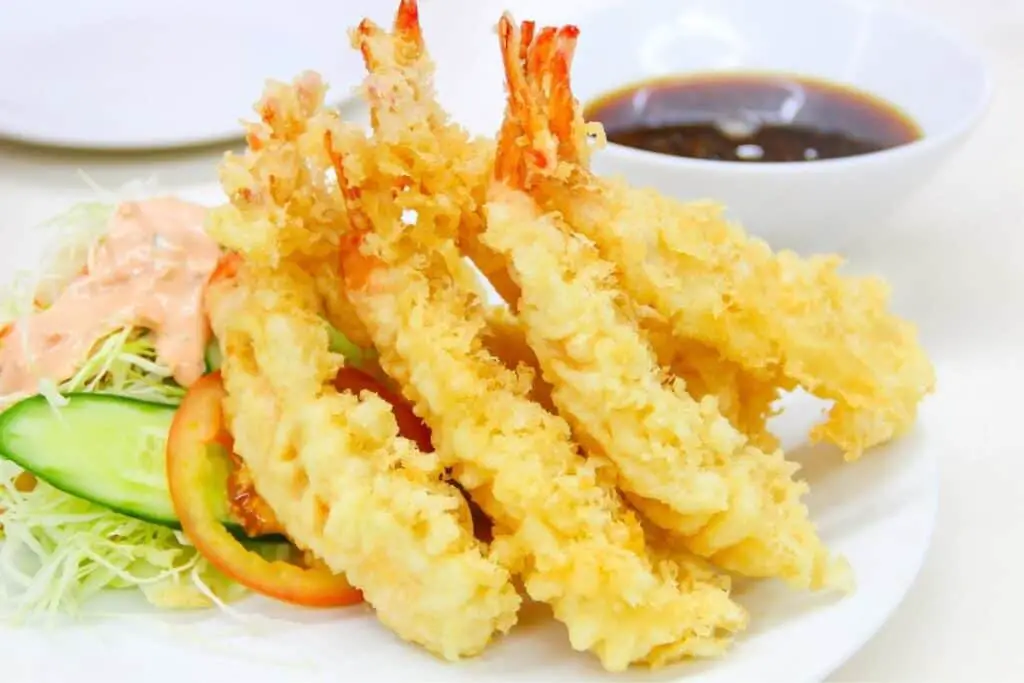
Sakana: Fish Fillet
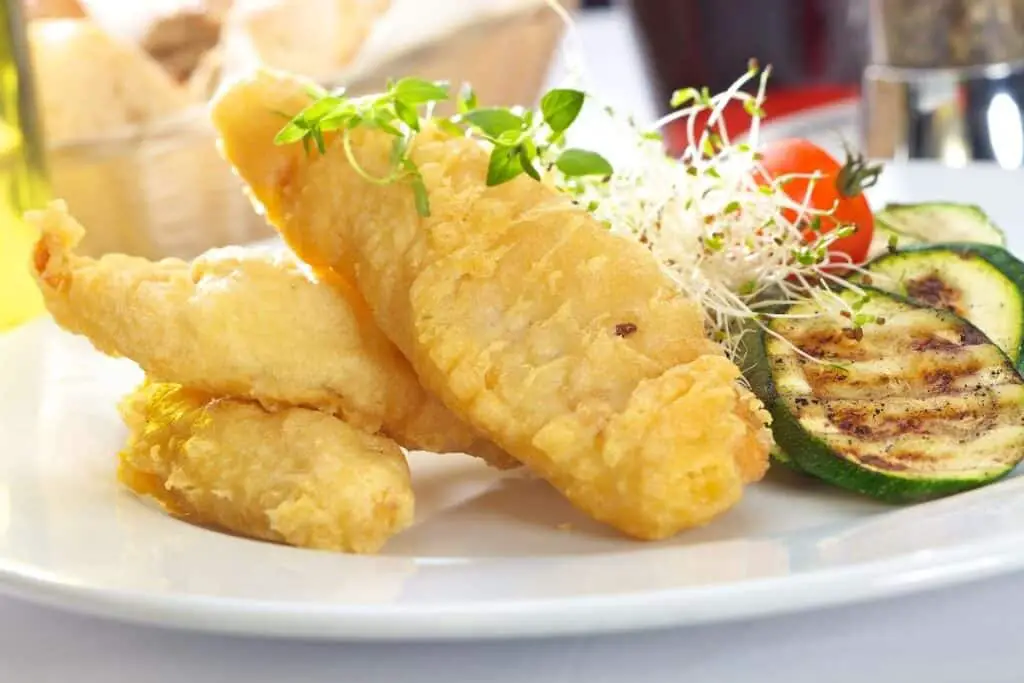
Nasu: Eggplant
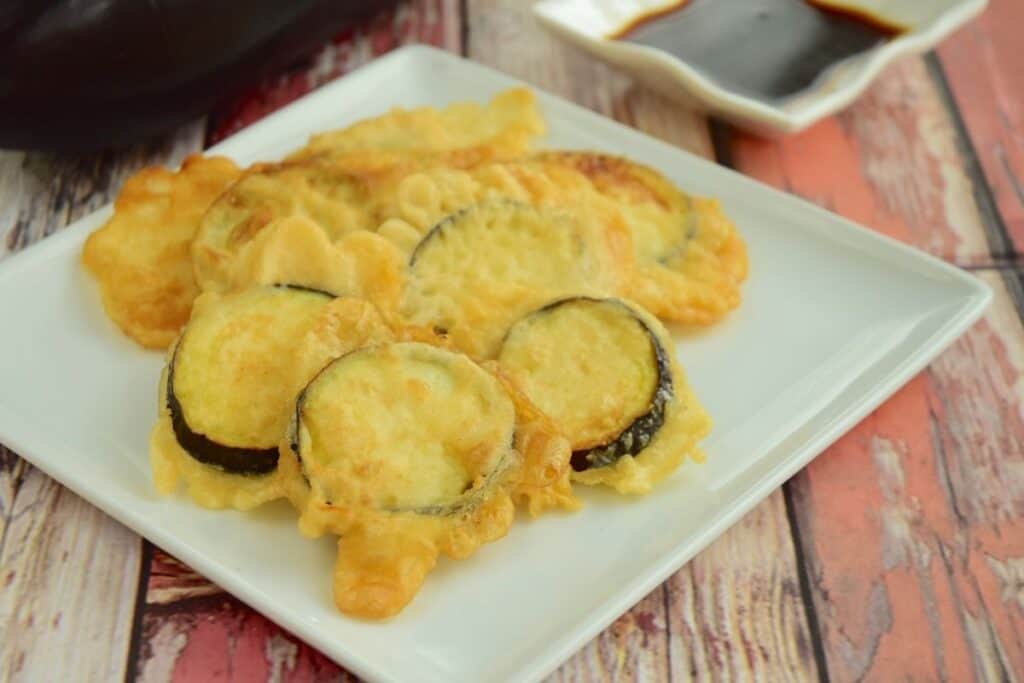
Kinoko: mushroom
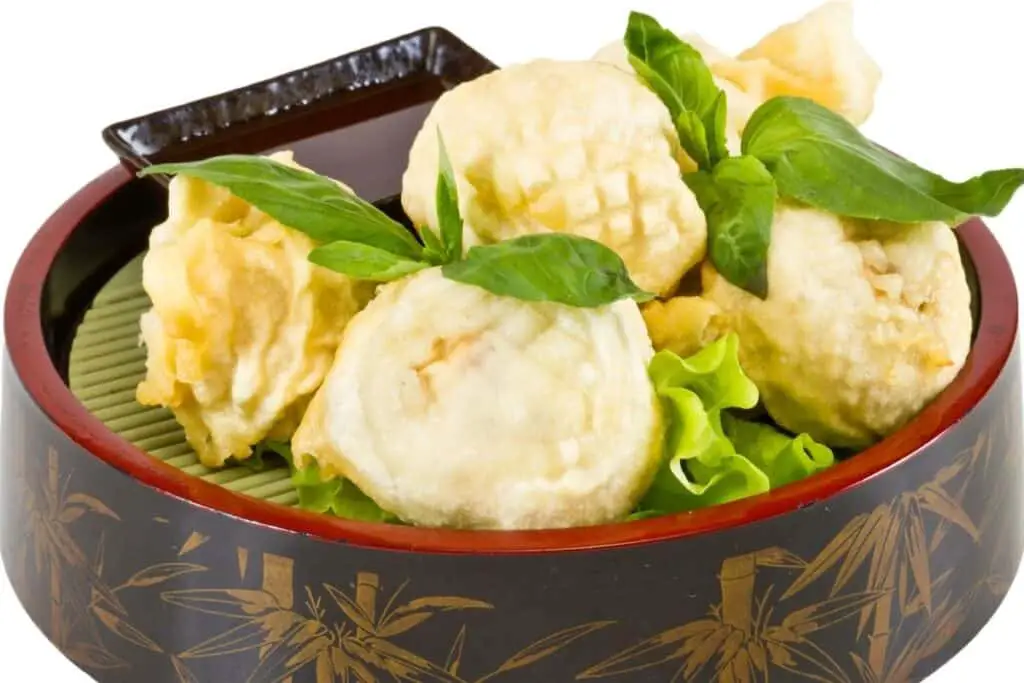
Kabocha: pumpkin
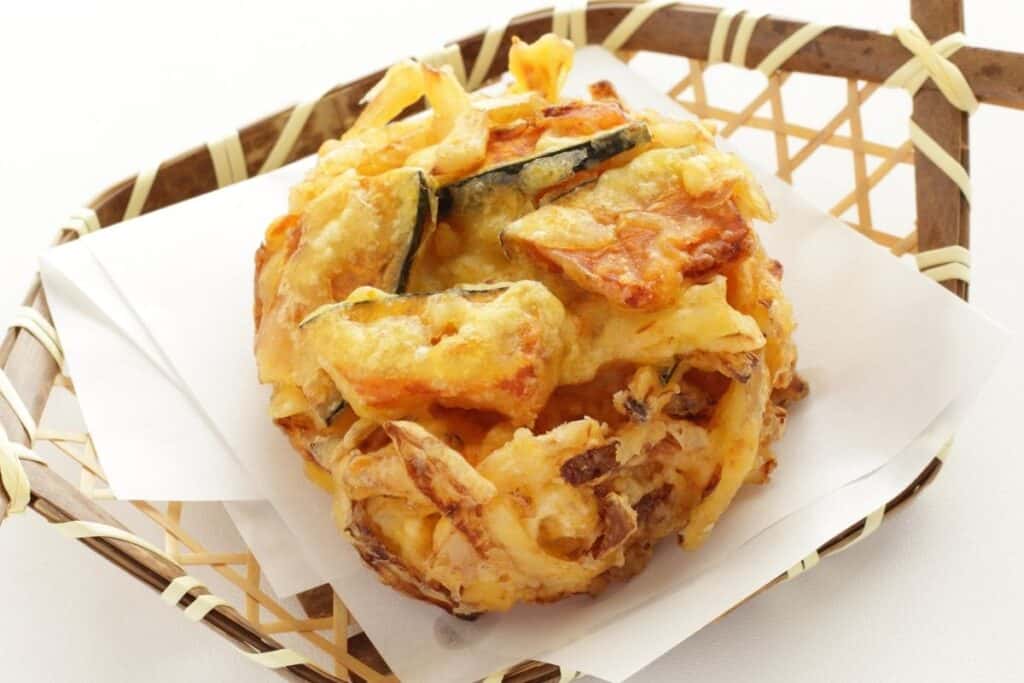
Satsumaimo: Sweet potato
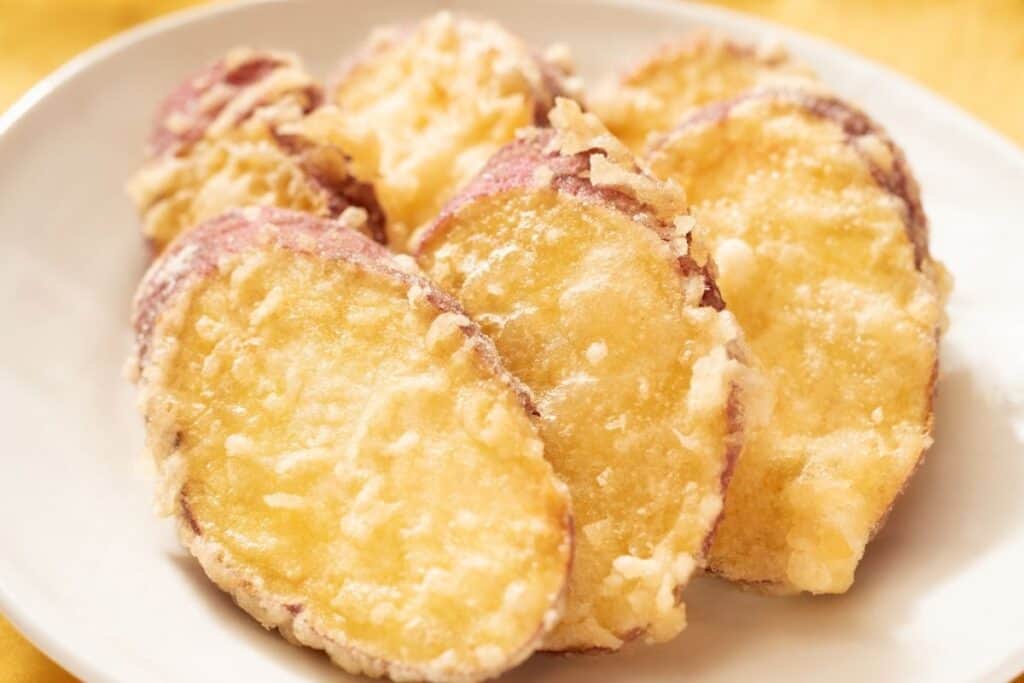
Ika: Squid
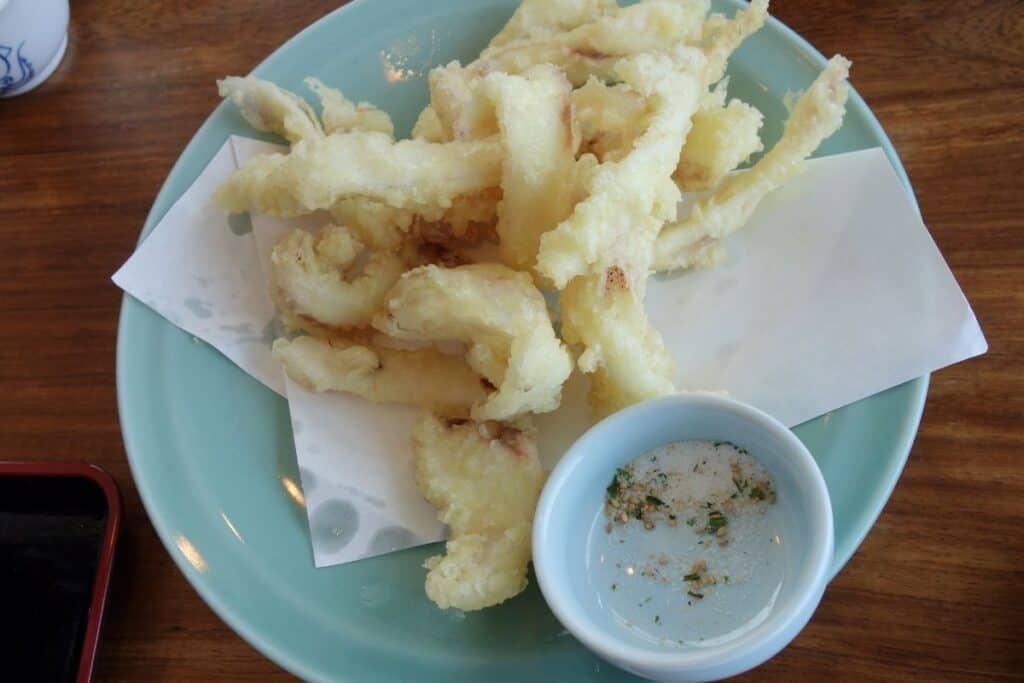
Shiso: Perilla Leaf (mint family)
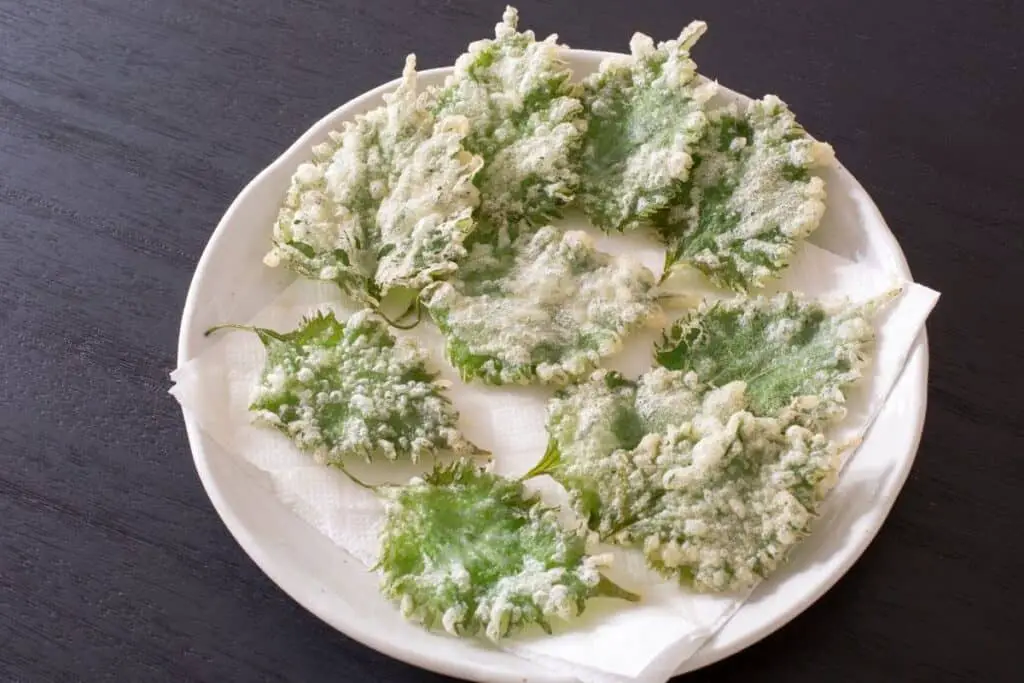
Kakiage: Mixed Vegetables (onion, carrots, burdock root, thinly sliced)
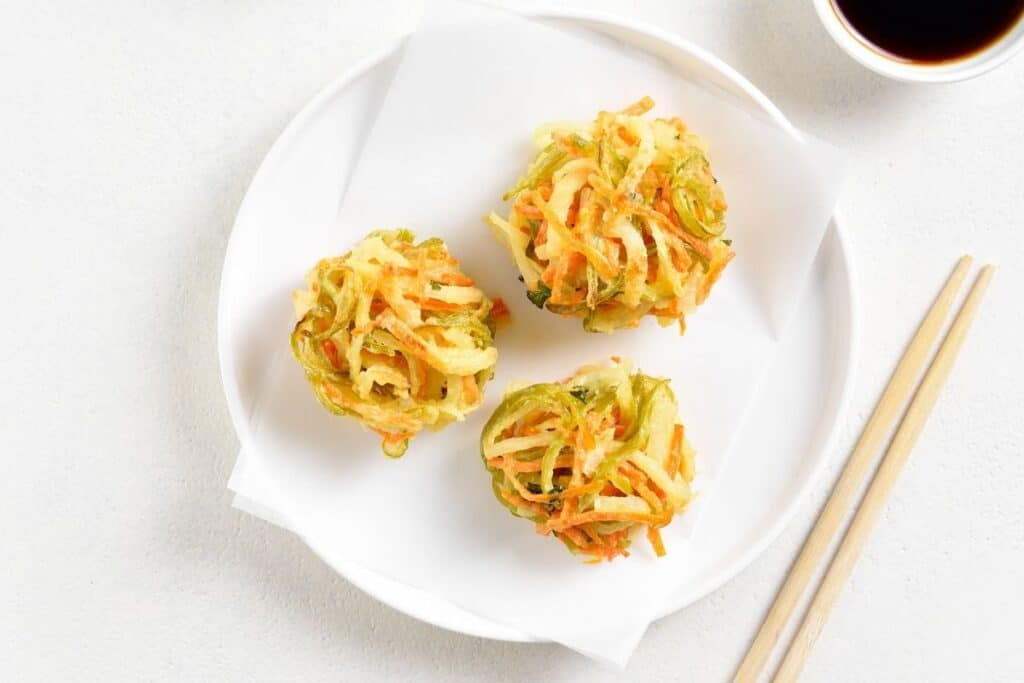
Ingen: Green Beans
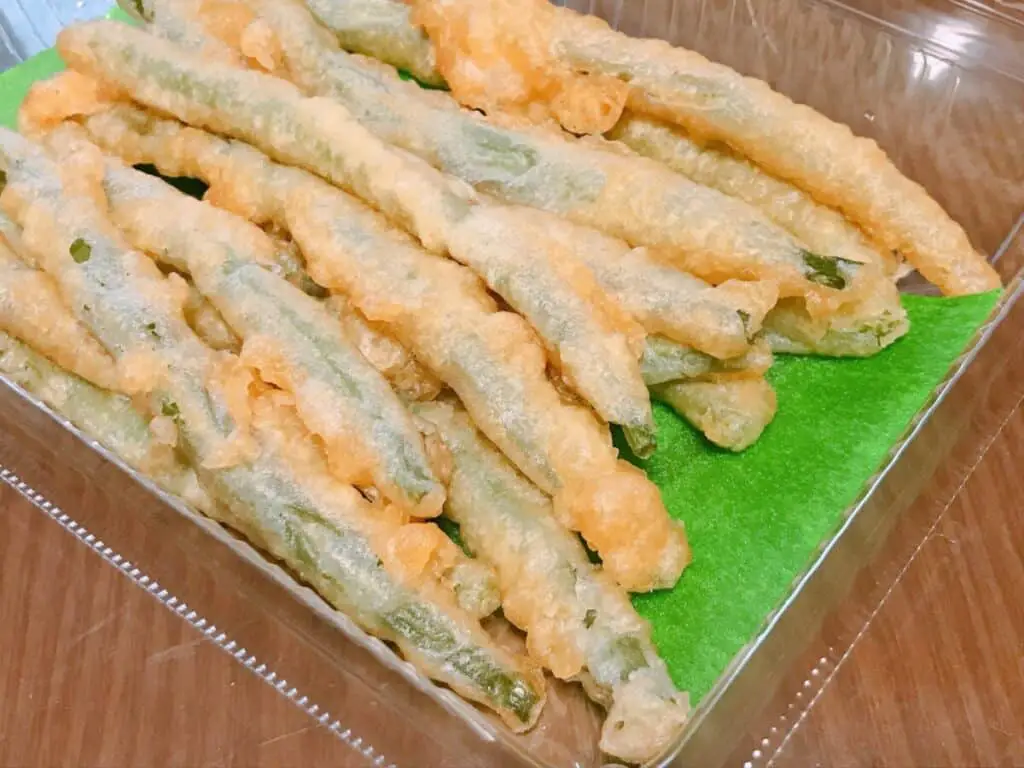
Renkon: Lotus Root
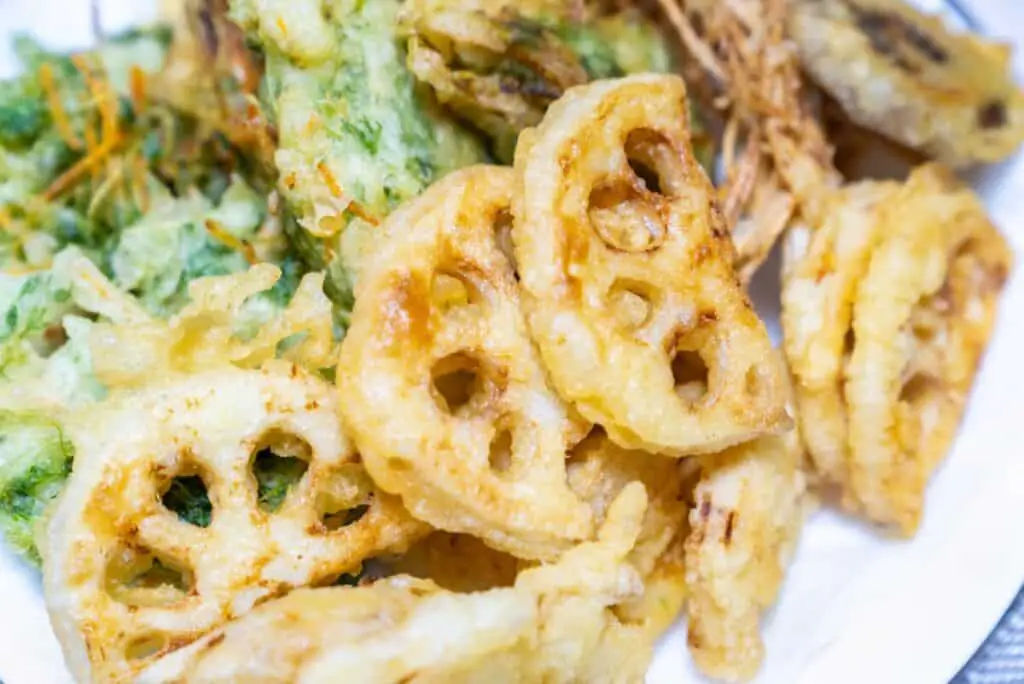
Okura: Okra
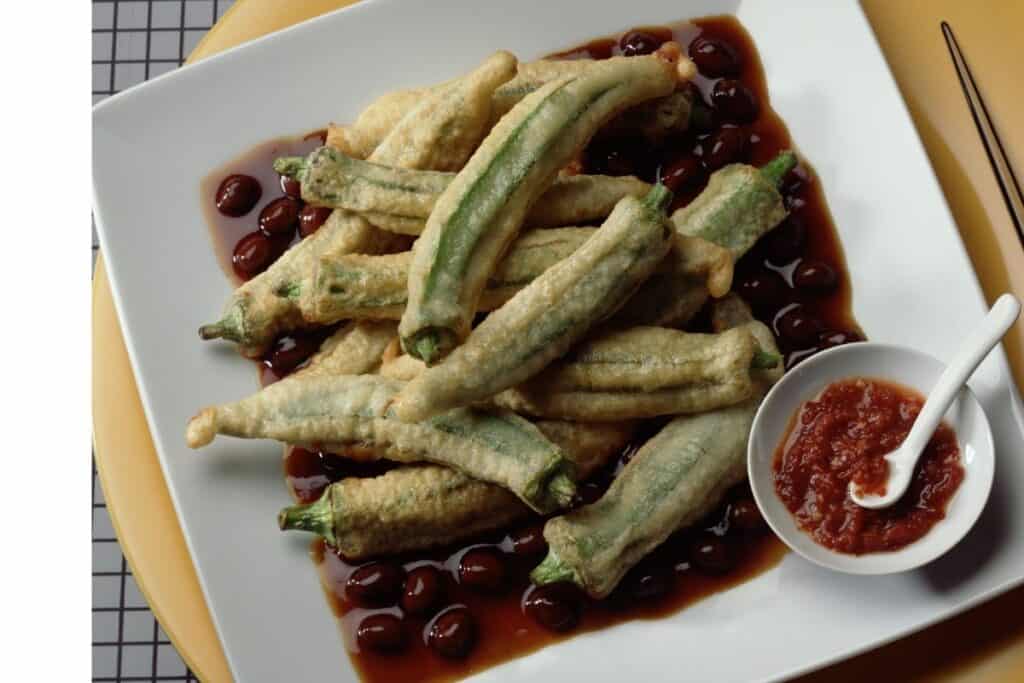
Ninjin: Carrot
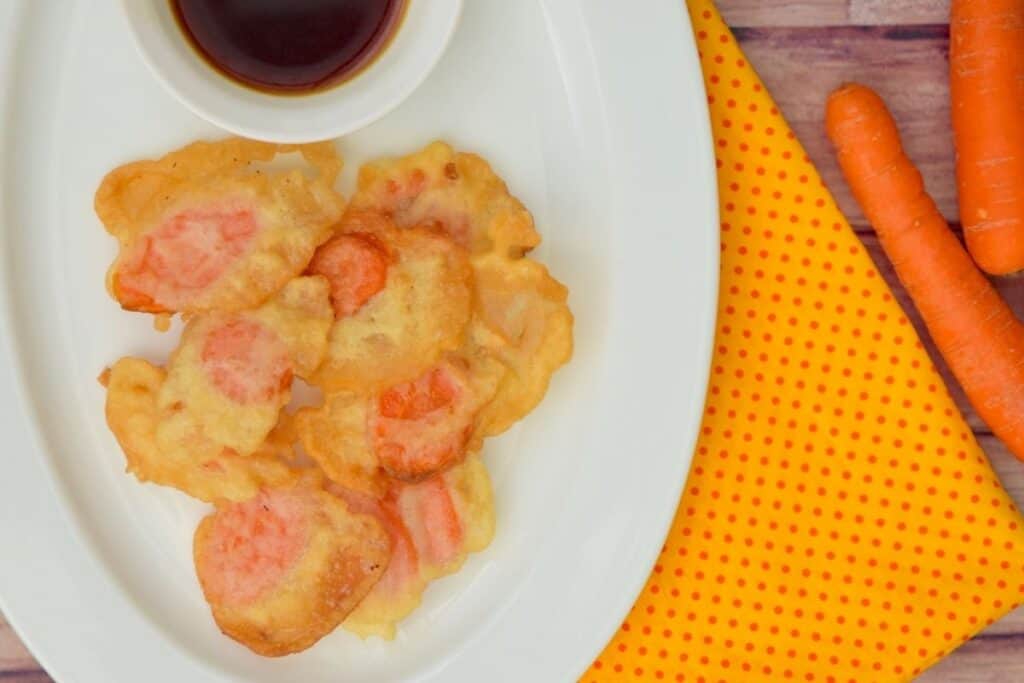
The most common ingredient for tempura is Ebi (Shrimp). For aesthetic purposes, the chef cooks the shrimp in a way, it never curls but stays straight. There are different kinds of shrimps (baname ebi, ushiebi, kuruma ebi) Japanese use. Shrimp tempura is often served with other seafood tempura, mainly squid.
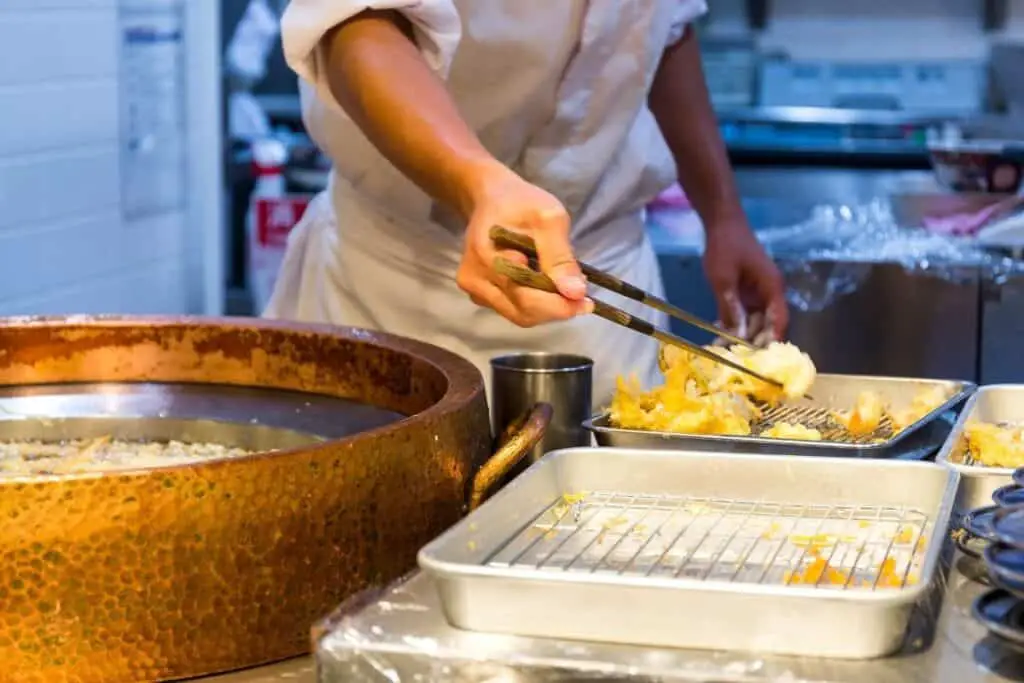
The basic Japanese batter consists of flour, eggs, and ice water. Although the batter is easy to make and mix, there are some details, you need to be careful. Things like using ice water, heating the oil to the correct temperature, and sifting the flour properly make better results.
Ways to enjoy tempura
People often pick the classic sauce called ’Tentsuyu’ (mirin, soy sauce, and dashi) dipping sauce. It’s enough to dip into the sauce just a little bit.
Most Japanese restaurants serve it whenever customers order tempura because it brings out the flavor of the tempura batter. Sometimes, they put grated ginger or Japanese radish (daikon) into the sauce to give a little bit of spiciness and freshness to the mix.
Another way to eat tempura is simply dipping it into a small amount of salt served in a small bowl. Sometimes they squeeze a little bit of lemon juice on the top of the tempura as well.
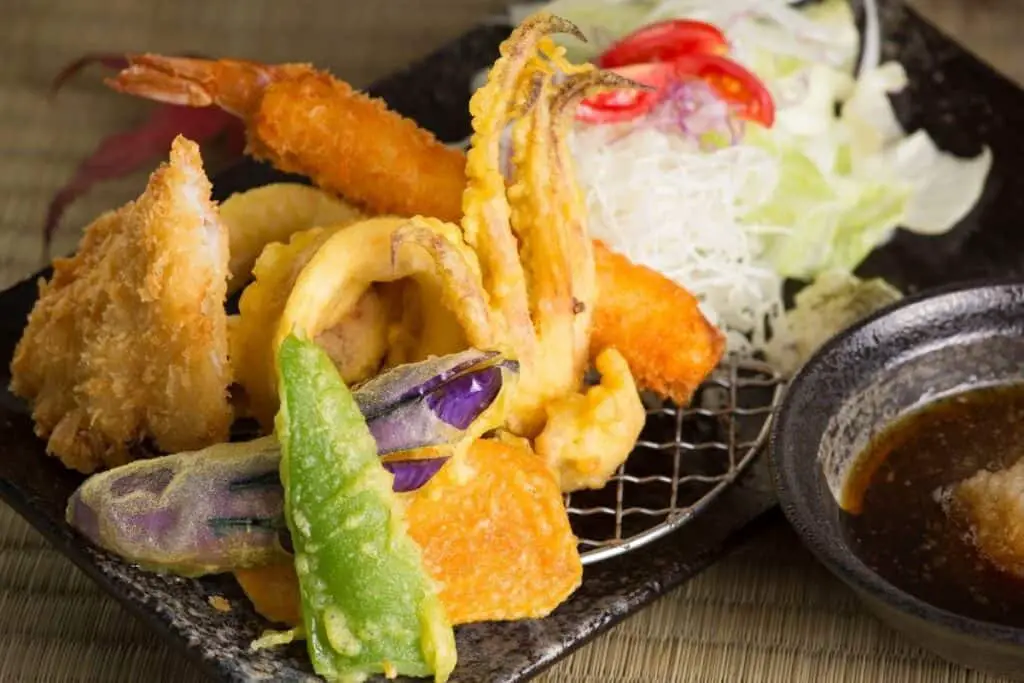
Donburi (over the rice) is a serving style that is traditional in Japan. Rice goes to the bottom of a bowl and then the topping. Tempura eaten in donburi style is called „Tendon”. We can pour a little bit of soy sauce or previously mentioned Tentsuyu sauce on it.
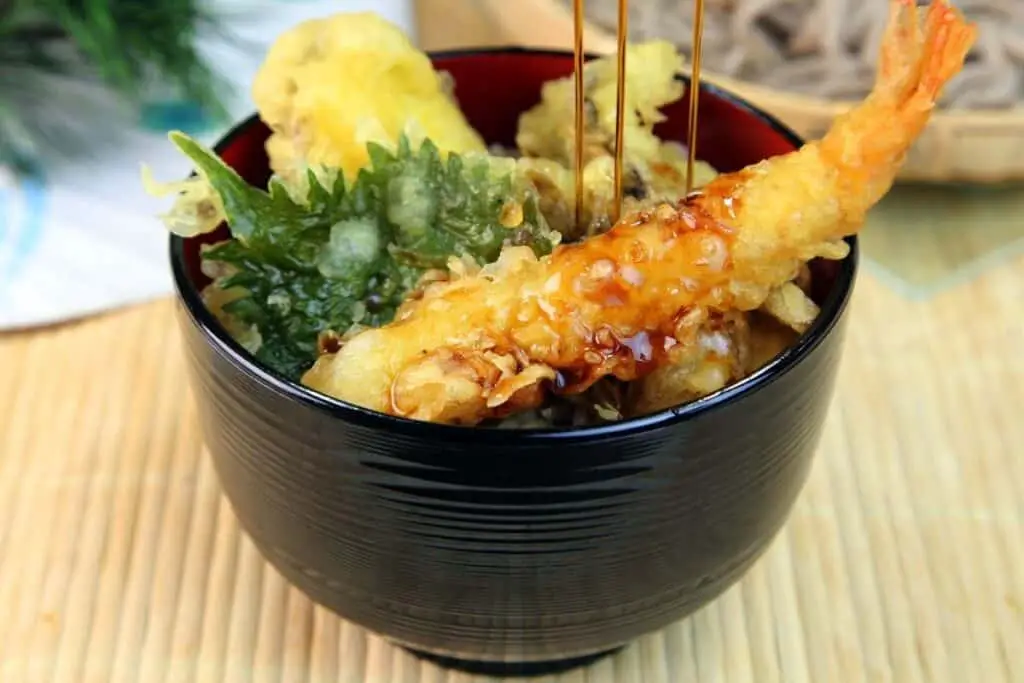
As another option, tempura often comes with udon soup, which has thick, white udon noodles or soba (buckwheat noodle). It can be eaten separately from the soup or let it soak into the fish’ stock (dashi) broth which complements the taste of the crispy tempura well.
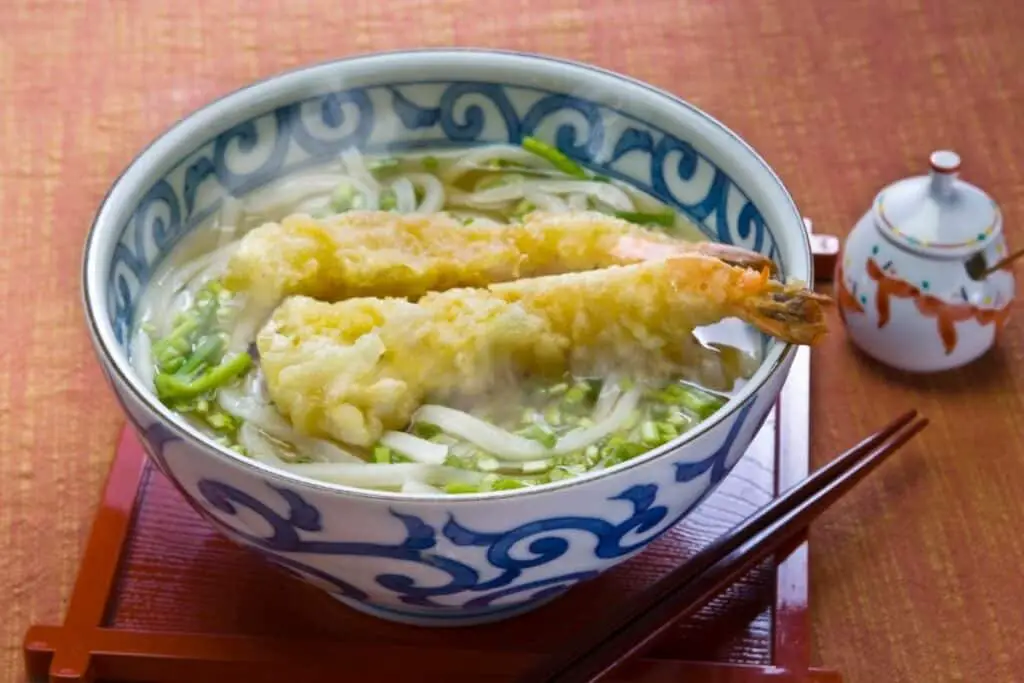
It might sound unorthodox, but you can also eat your tempura with green tea poured over the rice bowl. The tea soaks into the rice slightly and gives you a perfect harmony with the crispy tempura. This serving technique is called ’ochazuke’.
Of course, if you want to feel the original fresh and crispy taste of the tempura, you can always choose to eat it as it is, without any sauce or salt. It is commonly known that fried food goes well with beer. Japanese people also like to enjoy a glass of beer with tempura, but there is no rule on what to drink with this type of dish.
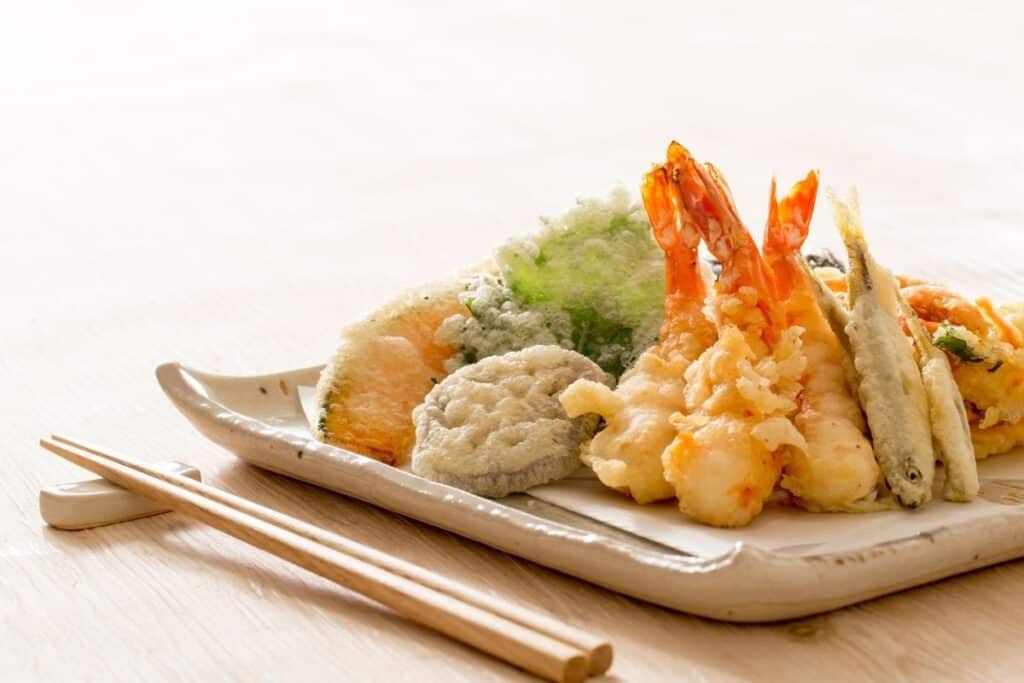
Lastly, to enjoy tempura, you should pay attention to the order of tasting. Eat from the lighter (vegetable) tempura to the heavier ones. Probably it is arranged in a way it makes you feel the stronger, deeper flavor as you go from the front to the back.
Tempura restaurants
If we want to find the best tempura, we should look for ’tempura-ya’ (restaurants specialized in tempura). The site Tableall provides us information regarding many famous, high-class tempura restaurants throughout the country.
The site contains information about the price, minimum guest numbers, location, and category ranking (Michelin star.) In those restaurants, guests sit at a counter watching the chef while he prepares the tempura one by one in front of them.
Best Tempura Restaurants In Tokyo (TripAdvisor)
Besides tempura-ya, other such establishments such as family restaurants, buffet restaurants, or izakayas (Japanese casual drinking bars) put tempura on their menus as well.
These restaurants are easy to find everywhere in Japan. For a cheaper price (10-13$), people can enjoy a set menu consisting of a different combination of tempura, a bowl of rice or noodles (udon or soba noodles), and miso soup.
Tempura bento (lunch box) or instant noodles with kakiage or food stalls selling tempura piece by piece are also available for everyone in many 24/7 convenient stores, food floors of department stores, or bigger supermarkets for a few hundred yen.
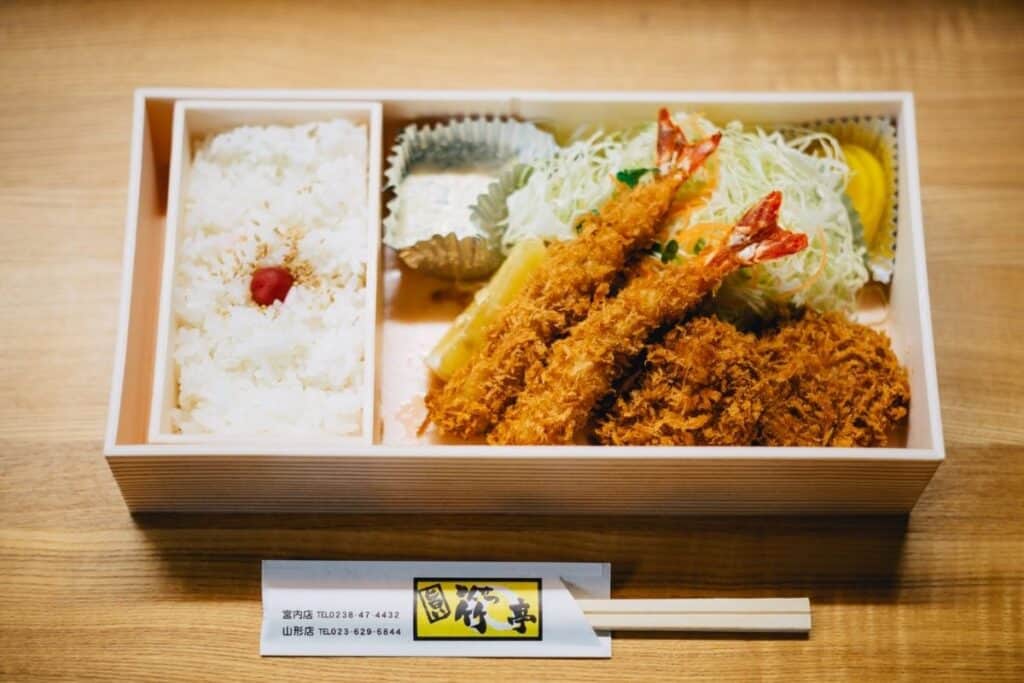
A bit of Japan at home
If you miss a little bit of Japan, the good news is that anybody can make tempura at home. Recipes are on the web are plentiful for those who would like to challenge themselves with creating a tempura dish. It’s perfect for a celebration, broadening your cooking repertoire, or impressing your friends with a special dinner…

